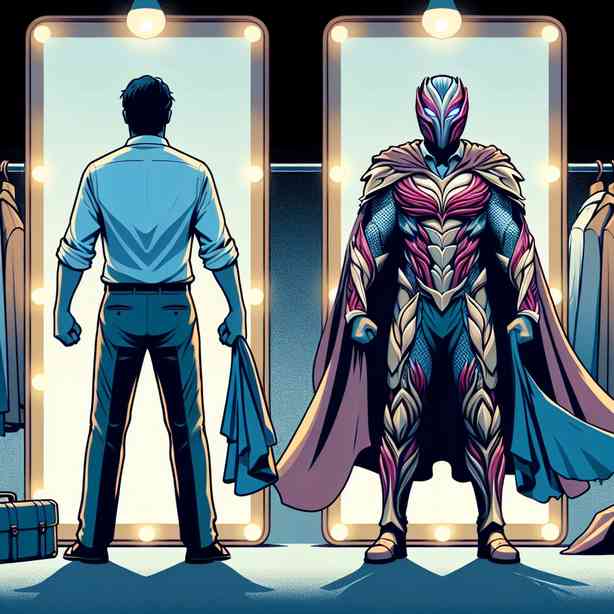
The Costume That Changed Your Character
When we think about the transformative power of costumes, it’s important to recognize that clothing is not merely fabric that covers our bodies; it serves as a profound medium of expression, identity, and deeply-rooted cultural significance. In various facets of life, including theater, film, and even everyday social interactions, the costumes we choose to wear can dramatically alter our perception of ourselves and how others perceive us. From historical garments that evoke nostalgia to futuristic designs that inspire innovation, the way we dress can influence our personalities and even change our characters.
To explore this concept further, we can examine several case studies across different domains. In theatrical performances, actors often undergo significant transformations through their costumes. A historical play set in the Victorian era, for instance, requires its actors to wear garments that reflect the societal norms and styles of that period. The weight of a corset or the feel of a long coat can transport an actor into the psyche of their character, affecting their posture, speech, and overall persona. Such research highlights the correlation between costume and identity, showcasing how garments mold our understanding and portrayal of a character, subsequently leading to more authentic performances.
When delving into film, iconic costumes frequently become synonymous with the characters they adorn. Think about the classic “Little Black Dress” epitomized by Audrey Hepburn in “Breakfast at Tiffany’s.” This outfit didn’t just define a fashionable trend in the 1960s; it encapsulated Holly Golightly’s complex character—a mix of innocence and sophistication, longing and despair. The costume elevated her character beyond the script—a hallmark of effective storytelling in cinema. Similarly, superhero films, with their vibrant and elaborate costumes, emphasize characteristics such as strength and valor. Take, for example, the evolution of Spider-Man’s suit; each iteration reflects not just advancements in technology but also the growth of Peter Parker as a character. The costume acts as a visual cue for the audience, symbolizing strength, responsibility, and sometimes vulnerability.
In everyday life, we also experience the profound effects of clothing on our personal identity. Many people will share transformative stories about how a specific outfit helped them land a job, ace a presentation, or even break out of their comfort zone. The phenomenon known as “enclothed cognition” refers to the mental shifts that accompany wearing certain types of clothing. When we dress for success—donning formal attire for an interview, for instance—we often feel more confident and authoritative. This feels like a change in character, as we embody traits associated with professionalism, showcasing how powerful our choice of clothing can be.
Moreover, traditional costumes connected to cultural events and festivals hold significant importance in shaping identity. They often serve as a bridge between individuals and their heritage, allowing them to embody history and tradition. For example, when a person wears a kimono at a Japanese tea ceremony, it is not simply clothing—they are participating in a ritual that transcends the physical and connects them to their ancestors. The meticulous details of the garment speak volumes about cultural pride, family connections, and community belonging, enabling a profound transformation in character as one steps into their cultural narrative.
Fashion trends can also lend a transformative quality to an individual’s character over time. The boldness of punk fashion in the 1970s gave rise to a subculture that drew attention to issues of rebellion and individualism. Wearing such distinct attire symbolized more than just a preference in clothing; it represented a stance against conformity and a desire for self-expression. In this light, clothing choices reflect personal stories and societal dynamics, illustrating the evolving nature of identity through time and across generations.
In literature, costumes play a fundamental role in shaping narrative and character depth. Authors often use vivid descriptions of clothing to provide readers with insights into a character’s personality and social status. The stark contrast between the lavish dresses of the aristocracy in Jane Austen’s novels and the simple garments of the lower classes creates a vivid visual that enhances character development and thematic nuance. It helps illustrate the societal structures of the time, making the story more relatable and immersive. Each choice of attire communicates something significant about the character, their desires, and their societal roles.
The relationship between costume and character extends into the realm of video games as well. Players immerse themselves in their characters, often customizing outfits that resonate with their understanding of that persona. The choice of armor in role-playing games can symbolize a player’s journey, not only in terms of gameplay mechanics but also in their emotional connection to the character. When a player equips a legendary cloak or a distinctive set of armor, it can create a sensation of achievement and identity within the game world—reflecting real-life associations between clothing and personal growth.
As we reflect on these various dimensions of how costumes influence character, it becomes evident that the fabric we choose to wear resonates far beyond mere aesthetic choices. Creative outlets, cultural practices, and personal experiences illustrate the multifaceted relationship between clothing and identity. Costumes can empower, alter perspectives, and evoke transformation—like a magical spell that aligns with the essence of who we are or aspire to be.
In summary, the costume that changes your character is more than just an outfit; it’s a dynamic tool that shapes identity, perception, and experience. The exchange between costume and character is a powerful narrative device that reverberates across different fields and forms of self-expression. Whether on stage, in film, or in the tapestry of our daily lives, the costumes we wear shape not just how we see ourselves but also how we are seen by others. As we navigate through our personal and collective narratives, let us embrace the costumes that resonate with our authentic selves, allowing them to guide us towards the characters we seek to embody.


